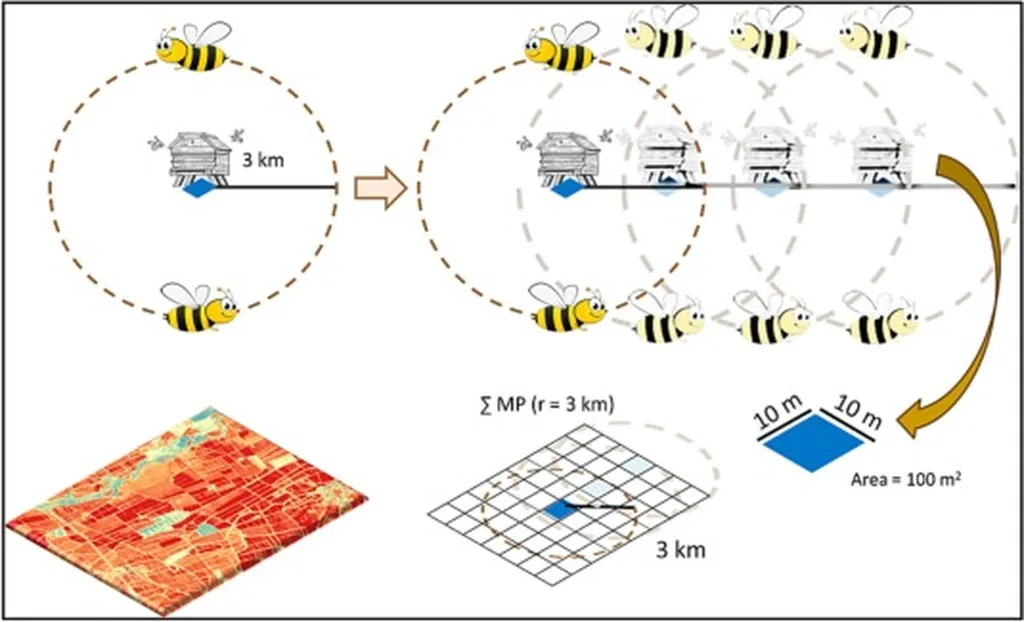In the heart of Türkiye’s Mardin Province, a novel approach to identifying prime beekeeping locations is buzzing with potential, offering a sweet spot for both apiculture and agriculture. A recent study published in *PLoS ONE* has harnessed the power of two Multi-Criteria Decision-Making (MCDM) methods—Analytical Hierarchy Process (AHP) and Full Consistency Method (FUCOM)—within a Geographic Information Systems (GIS) framework to pinpoint optimal beekeeping areas. This research, led by Çağrı Mercan, could significantly impact the agricultural sector by enhancing land-use planning and boosting apicultural sustainability.
The study evaluated nine key factors, including environmental, climatic, topographical, logistic, and socio-economic variables, to create suitability maps for beekeeping. “Land use/cover, proximity to water sources, and precipitation emerged as the most influential factors,” Mercan explained. These findings are crucial for beekeepers and policymakers aiming to maximize the efficiency and sustainability of apiculture.
The research revealed that 83% of existing hive locations coincided with areas classified as moderately suitable or higher, validating the robustness of the framework. Notably, AHP achieved a slightly higher predictive accuracy (AUC = 0.774) compared to FUCOM (AUC = 0.754). However, FUCOM required substantially fewer pairwise comparisons, making it a more efficient tool for decision-making.
The implications for the agricultural sector are profound. By identifying optimal beekeeping locations, farmers and beekeepers can enhance pollination services, which are vital for crop productivity and biodiversity conservation. “This framework provides a practical tool for sustainable apicultural land-use planning,” Mercan noted. “It offers transferable insights for policymakers, decision-makers, and beekeepers in Türkiye and other regions with similar ecological conditions.”
The study’s findings could shape future developments in the field by promoting more informed and strategic land-use planning. As the agricultural sector continues to grapple with challenges such as climate change and land degradation, tools like these are invaluable. They not only support the growth of apiculture but also contribute to the broader goals of agricultural sustainability and food security.
In an era where data-driven decision-making is becoming increasingly important, this research underscores the potential of integrating advanced methodologies like AHP and FUCOM with GIS. As the agricultural sector evolves, such innovative approaches will be crucial in addressing the complex challenges of modern farming and ensuring a sustainable future for apiculture and agriculture alike.

